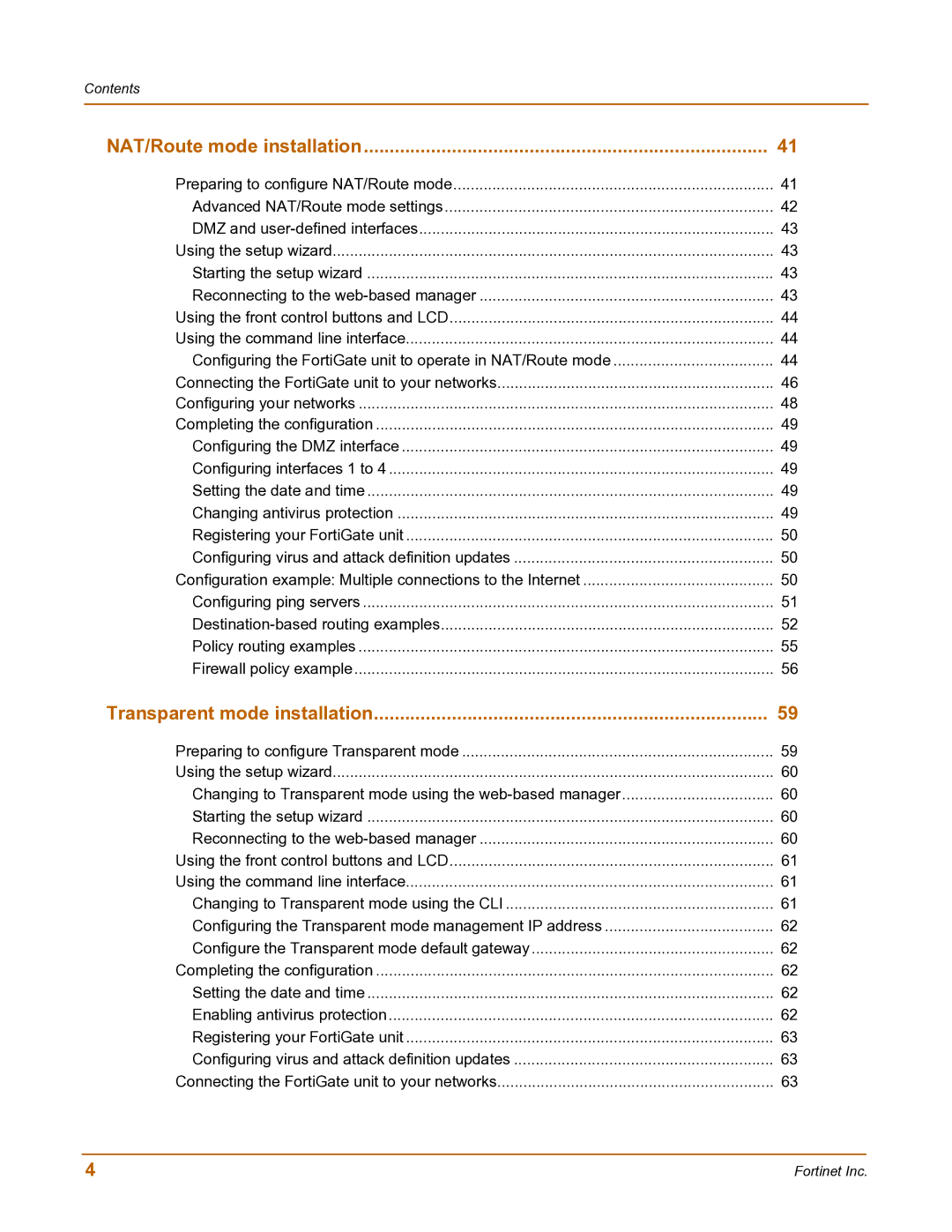
Contents
NAT/Route mode installation | 41 |
Preparing to configure NAT/Route mode | 41 |
Advanced NAT/Route mode settings | 42 |
DMZ and | 43 |
Using the setup wizard | 43 |
Starting the setup wizard | 43 |
Reconnecting to the | 43 |
Using the front control buttons and LCD | 44 |
Using the command line interface | 44 |
Configuring the FortiGate unit to operate in NAT/Route mode | 44 |
Connecting the FortiGate unit to your networks | 46 |
Configuring your networks | 48 |
Completing the configuration | 49 |
Configuring the DMZ interface | 49 |
Configuring interfaces 1 to 4 | 49 |
Setting the date and time | 49 |
Changing antivirus protection | 49 |
Registering your FortiGate unit | 50 |
Configuring virus and attack definition updates | 50 |
Configuration example: Multiple connections to the Internet | 50 |
Configuring ping servers | 51 |
52 | |
Policy routing examples | 55 |
Firewall policy example | 56 |
Transparent mode installation | 59 |
Preparing to configure Transparent mode | 59 |
Using the setup wizard | 60 |
Changing to Transparent mode using the | 60 |
Starting the setup wizard | 60 |
Reconnecting to the | 60 |
Using the front control buttons and LCD | 61 |
Using the command line interface | 61 |
Changing to Transparent mode using the CLI | 61 |
Configuring the Transparent mode management IP address | 62 |
Configure the Transparent mode default gateway | 62 |
Completing the configuration | 62 |
Setting the date and time | 62 |
Enabling antivirus protection | 62 |
Registering your FortiGate unit | 63 |
Configuring virus and attack definition updates | 63 |
Connecting the FortiGate unit to your networks | 63 |
4 | Fortinet Inc. |
